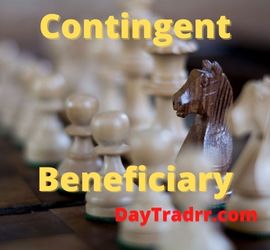What Is Cash on Cash Return?
 Cash on cash return (CoC) is a rate of return metric that is commonly used in real estate investments. It compares total cash earned to total cash invested. The ratio can give you an idea of your property’s potential, but it is limited in a few key ways. This calculation ignores specific tax situations and does not account for appreciation or depreciation. No metric can predict the future and CoC is no exception. For example, it can’t tell you what will happen if there’s a fire or a flood, or what long-term expenses you’ll face. Also, it can’t tell you how much profit you’ll make when you sell the property. However, it can give a good idea of the potential return on your cash outlay. Of course, this assumes your input numbers are correct and no unexpected outlays or extraordinary events come up.
Cash on cash return (CoC) is a rate of return metric that is commonly used in real estate investments. It compares total cash earned to total cash invested. The ratio can give you an idea of your property’s potential, but it is limited in a few key ways. This calculation ignores specific tax situations and does not account for appreciation or depreciation. No metric can predict the future and CoC is no exception. For example, it can’t tell you what will happen if there’s a fire or a flood, or what long-term expenses you’ll face. Also, it can’t tell you how much profit you’ll make when you sell the property. However, it can give a good idea of the potential return on your cash outlay. Of course, this assumes your input numbers are correct and no unexpected outlays or extraordinary events come up.
Cash on cash return is one of several metrics used by real estate investors. It is a tool to assess the current or future profitability of an investment property. The calculation compares the net income generated by a property to the initial cash investment required to purchase that same property. In other words, cash on cash return indicates how much of your out-of-pocket investment you earn back each year. It compares the annual return made by the investor on the property to the amount of mortgage paid during the same year. Due to its simplicity, CoC is regarded as one of the most important real estate ROI calculations.
Cash on Cash Return – A Closer Look
A cash on cash return is commonly used to assess the performance of commercial real estate investments. It is also known as the cash yield on property investment. The CoC rate measures a property’s business potential and cash distributions over the life of the investment. Debt is commonly involved in the majority of real estate transactions. For investment properties that involve long-term debt borrowing, cash-on-cash return analysis is frequently used. It only considers the cash outlay necessary to secure the investment. As such, the actual cash return on investment differs from the standard return on investment (ROI).
In other words, standard ROI calculations take into account the total return on investment. Cash on cash return, on the other hand, only considers the return on the actual cash invested. This allows for a more accurate assessment of the investment’s performance.
How Is Cash on Cash Return Calculated?
CoC is computed by dividing the pre-tax cash inflows received by the investor by the pre-tax outflow paid by the investor. Essentially, it divides net cash flow by the total amount of cash invested. The formula for CoC is:
Cash on Cash Return = (Annual Cash Flow / Total Cash Invested) x 100%
Cash on Cash Return Example
Consider a commercial real estate investor who invests in a property that generates a modest monthly income of $5,000. The entire cost of the property is $1 million. The investor puts down $150,000 in cash and borrows $850,000 from a bank. Closing fees, insurance premiums, and maintenance charges come to $24,000. Mr. Investor’s interest-only mortgage payments are $6,000 per month. These fees are offset by the total rent received over the next 12 months of $5,000 per month.
After one year, the investor has paid $72,000 in interest-only loan payments. He decides to sell the property for $1.15 million after one year. This means the investor’s total cash outflow is $150,000 + $24,000 + 72,000 = $246,000. After the bank debt of $850,000 is repaid, Mr. Investor is left with a cash inflow of $300,000 + $60,000 = $360,000. His cash on cash return is calculated as follows: $360,000 – $246,000 / $246,000 x 100% = 46.34%.
CoC can be used to calculate the present rate of return. However, it may also be used to anticipate an investment’s expected future cash payouts. But, unlike a monthly coupon payment distribution, it is not a guaranteed return. Rather, it is a target used to evaluate a possible investment. In this sense, the cash on cash return is an estimate. It projects what an investor expects to earn throughout the course of the transaction.
What Does Cash on Cash Return Tell You?
Cash on cash return is a simple technique for investors to decide whether or not the assets warrant further examination or study. Investors looking for a rental property with high cash flow might use this financial tool. It may help to determine if a property is overpriced or underpriced. Investors are normally compelled to make principal and debt service payments. Most real estate purchases employ debt for a portion of the asset. As a result, the CoC returns will be smaller.
- Profitability metric – The cash on cash return is also known as the cash yield on property investment. It can quickly indicate the potential success of a commercial real estate investment. Due to its simplicity, it remains one of the most significant real estate ROI computations. Essentially, this metric offers owners and investors an easy-to-understand examination of a property’s business potential. It compares outlay with the anticipated cash payouts during the investment’s life.
- Evaluate lenders – CoC analysis can also steer investors in the proper direction when it comes to a mortgage. For example, when deciding between a regular mortgage and a private lender. The cash on cash returns calculation may tell which path will optimize your annual returns.
- Compare investments – Many investors assess different investment assets using cash on cash returns. By comparing this indicator across properties, investors may have a better understanding of how each one will affect their total portfolios. Investors may receive a consistent view of the long-term potential of numerous assets by depending on cash on cash returns as a comparison.
What Is A Good Cash On Cash Return?
There are no hard and fast criteria for determining what constitutes a decent return rate. Investors appear to agree that predicted cash on cash return above 10 percent signals a successful investment. Others think that even 6 to 9 percent is appropriate in specific markets. A new investor may begin with lower cash on cash return criteria and gradually raise their expectations. This is realistic as they acquire expertise and understand what to look for in a rental property. Another element to consider when calculating your return is your investing goals. For example, investing in a growing or appreciating market may result in a lesser return. However, this does not always imply that it is a bad investment.
It’s important to realize that return rates will vary substantially. It can depend on how much you spend out of pocket and how you manage your cash flow. For example, if you invest none of your own money, your CoC will be zero. This does not imply that you have a terrible investment on your hands. However, the formula is ineffective in this scenario. This demonstrates the importance of knowing how a formula works. What the numbers imply can be just as essential as knowing the final results. It also explains why investors employ a variety of algorithms to do transaction assessments.
Influencing Factors
High CoC is vital for most early-career investors since cash flow is the industry’s lifeblood. Also, the focus is on wealth generation early on. In later years, as a very successful investor, one may be more concerned with wealth preservation. Therefore, a lower CoC with significant appreciation may be more essential.
Typically, the CoC is lower in areas that are more desirable. The CoC in Beverley Hills will be much lower than the CoC in a small west Texas town. An investment in Beverley Hills is justified more by the appreciation of the property over long periods of time, not necessarily the monthly cash flow… If a trailer park returned CoC at 10%, most wouldn’t even consider looking at it; but a brand-new Class A apartment that returned a 10% COC would have a long line of investors wrapping around the block. (Source: forbes.com)
CoC versus other Financial Metrics
When debt is utilized in a real estate transaction, the terms cash on cash return and other measures are not interchangeable.
CoC versus ROI
The majority of commercial properties are debt-financed, and the real cash return on investment differs from the typical return on investment (ROI). ROI assesses the overall return on an investment, including the debt load. CoC, on the other hand, solely considers the return on the actual cash invested. This distinction can allow for a more precise assessment of the investment’s success.
CoC versus NOI
The calculation of NOI, or net operating income, differs from the calculation of CCR. The fundamental distinction is that cash on cash return includes debt payment, whereas NOI does not. You may calculate your predicted NOI by deducting property running expenditures from the total income property will earn when fully leased. Landscaping, utilities, and upkeep are all operational costs.
CoC versus IRR
Internal Rate of Return, or IRR, is a metric used to assess the potential profitability of an investment. However, it measures this throughout the whole holding duration. Total cash flow, original investment expenses, and the prospective holding time are all used to calculate IRR. CoC, on the other hand, solely considers profitability with respect to the initial investment. Also, CoC does not account for the whole investment’s ownership tenure.
CoC versus Cap Rate
The cap rate computation is based on the assumption that there is no debt on the property. If a property is acquired entirely with cash and no debt, the cash on cash return is the same as the cap rate. However, because most investors utilize some form of leverage, these measures are often different.
Up Next: What Is a Contingent Beneficiary?
 What is a contingent beneficiary? It is the person next in line to receive a beneficiary-named account if the primary beneficiary is unable or unwilling. A contingent beneficiary is a secondary beneficiary who is essentially waiting in the wings, just in case. In other words, a contingent beneficiary is a person who receives an inheritance next in line after the primary beneficiary. For example, if the primary beneficiary dies, this person will inherit the named assets. If the account you designate to be given to a primary beneficiary cannot be found, declines the gift, is not legally able to accept it, or dies before you do, the account will be released to your second choice as the beneficiary.
What is a contingent beneficiary? It is the person next in line to receive a beneficiary-named account if the primary beneficiary is unable or unwilling. A contingent beneficiary is a secondary beneficiary who is essentially waiting in the wings, just in case. In other words, a contingent beneficiary is a person who receives an inheritance next in line after the primary beneficiary. For example, if the primary beneficiary dies, this person will inherit the named assets. If the account you designate to be given to a primary beneficiary cannot be found, declines the gift, is not legally able to accept it, or dies before you do, the account will be released to your second choice as the beneficiary.
A contingent beneficiary is a person or entity designated by an insurance contract holder or retirement account owner. They are next in line to receive proceeds if the primary beneficiary is deceased, unable to be found, or refuses the inheritance at the time the proceeds are to be paid. A contingent beneficiary is only entitled to insurance proceeds or retirement assets if certain predetermined conditions, such as information found in a will, are met at the time of the insured’s death.




